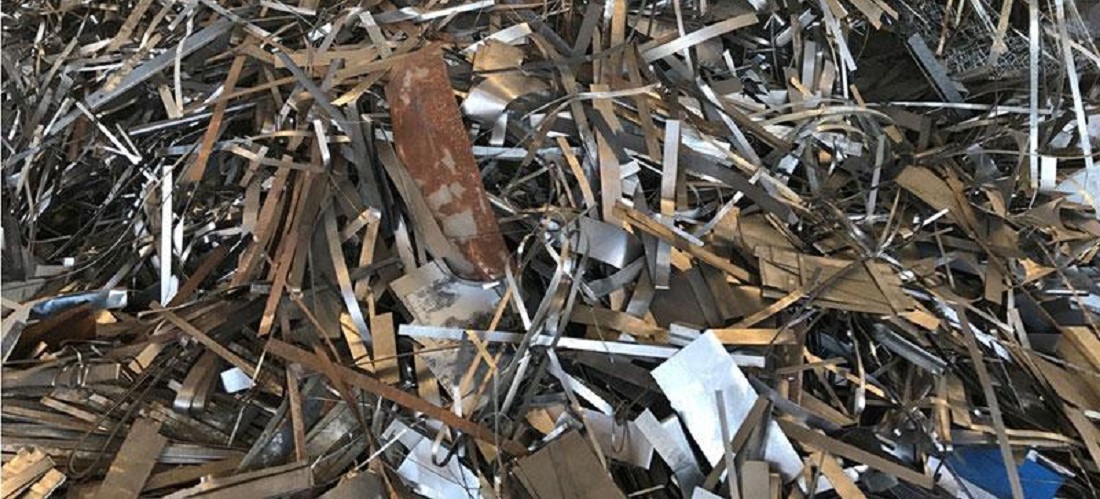
Scrap: Exports Fall in November, but Crude Steel Production Grows in the Year
Dec, 17, 2024 Posted by Denise VileraWeek 202448
Exports of ferrous scrap and recycled materials used in steel production persisted in the downward trend observed in recent months amid an uncertain international economic environment. In November, 45,338 tons of scrap were exported, a decrease of 43.3% compared to the same month in 2023, when exports totaled 79,985 tons. The volume showed little variation from October, when external sales reached 44,408 tons.
The reduction in external sales has not been offset by the domestic market, which remains sluggish, with a lack of orders and stable prices, despite the recovery of the Brazilian economy this year, according to the Instituto Nacional de Reciclagem (Inesfa), a trade body representing more than 5,500 recycling companies engaged in the circular economy, reinserting inputs into the recycling cycle for transformation.
From January to November, exports also declined, reaching 648,212 tons—11.8% less compared to the same period in 2023, when 735,248 tons were recorded, according to data released by the Secretaria de Comércio Exterior (Secex) of the Ministry of Development, Industry, Trade, and Services (MDIC).
Below is a historical overview of Brazilian containerized ferrous scrap exports registered between January 2021 and 2024. The data comes from DataLiner, a product of Datamar’s market intelligence.
Ferrous Scrap | Jan 2021 – Oct | TEUs
Source: DataLiner (click here to request a demo)
The continuous decline in external sales in recent months is attributed, according to Inesfa, to instability in the international market due to global economic uncertainties, geopolitical conflicts, and currency fluctuations.
“We believe this scenario will persist until the end of the year, affecting both domestic and external markets,” said Clineu Alvarenga, president of Inesfa. For the year, exports are expected to fall short of the record 800,000 tons reached in 2023, according to the association’s assessment.
Exports are an alternative for scrap recycling companies when domestic demand is weak. However, external sales have been losing momentum since September this year, making the scenario “very concerning, with a lack of options for the sector,” Alvarenga added.
According to research conducted by S&P Global Platts, an American agency specializing in providing benchmark prices and references for the commodities market, “the Indian market (one of the main markets for Brazilian scrap) remained weak, without the expected recovery after Diwali, harmed by competitive imports of finished products from China, Vietnam, and South Korea.”
Meanwhile, data from Instituto Aço Brasil released last Monday show that crude steel production in the country reached 31.1 million tons from January to November this year. The result represents a 5.6% increase compared to January-November 2023.
In the comparison between the two periods, imports, apparent consumption, and domestic sales grew by 24.4%, 9.6%, and 8.7%, respectively.
With December’s results included, 2024 is expected to close with a total production of 33.7 million tons. For the year so far, the weakest indicator has been exports, totaling 8.8 million tons—18.5% less than last year.
The organization highlighted the contribution of three key steel-dependent sectors to this performance: the automotive sector grew by 12.1%, while the machinery and equipment sector and the civil construction sector posted growth of 1% and 4.1%, respectively.
The institute’s executive president, Marco Polo de Mello, referred to a dataset compiling historical consumption figures for the metal alloy across several countries over 43 years. In Brazil in 1980, the average proportion was 100.6 kg per capita, increasing to 110.8 kg in 2023. The country’s variation was 10.1%, whereas China, for instance, recorded a staggering 1,863% increase.
The Asian country was mentioned as a concern due to what Mello described as “predatory activity,” dominating steel exports.
Mello stated that one of the key topics discussed was energy transition, particularly during the UN Climate Change Conference (COP29) held last month in Baku, Azerbaijan. He emphasized that the steel and iron industries account for only 4% of Brazil’s greenhouse gas emissions, a figure that rises to 7% globally.
Citing these figures, Mello called for other economic sectors to be proportionately held accountable for the environmental damage they cause. Agribusiness, for instance, accounts for 32% of emissions, while the energy sector is responsible for 24%.
Mello further emphasized the importance of distinguishing between goals set by the Brazilian government and those achievable by the sector. “We will only commit to feasible targets,” he declared.
The executive used the United States as an example, stating that after experiencing a boom in automobile production, the country leveraged these units as scrap—a solution he views as part of the energy transition.
The second complementary solution, according to Mello, is using hydrogen as a substitute in the steel decarbonization process. He criticized Petrobras, arguing that such a shift would require a “less monopolistic stance” from the company. The steel industry would need R$ 180 billion in investments to make the transition to clean energy viable and complete this set of tools.
With information from Agência Brasil
Source: Monitor Mercantil
-
Grains
Mar, 18, 2024
0
Chinese Corn Imports Surge by 16.1% in Combined January-February Period
-
Ores
May, 16, 2021
0
Vale looking to reduce emissions with first-ever wind-powered ore carrier
-
Fish
Jun, 13, 2024
0
Tilapia market faces slow demand amid high supply in May
-
Other Logistics
Jan, 09, 2023
0
New Brazilian administration brings changes to infrastructure and logistics. Find out more.

